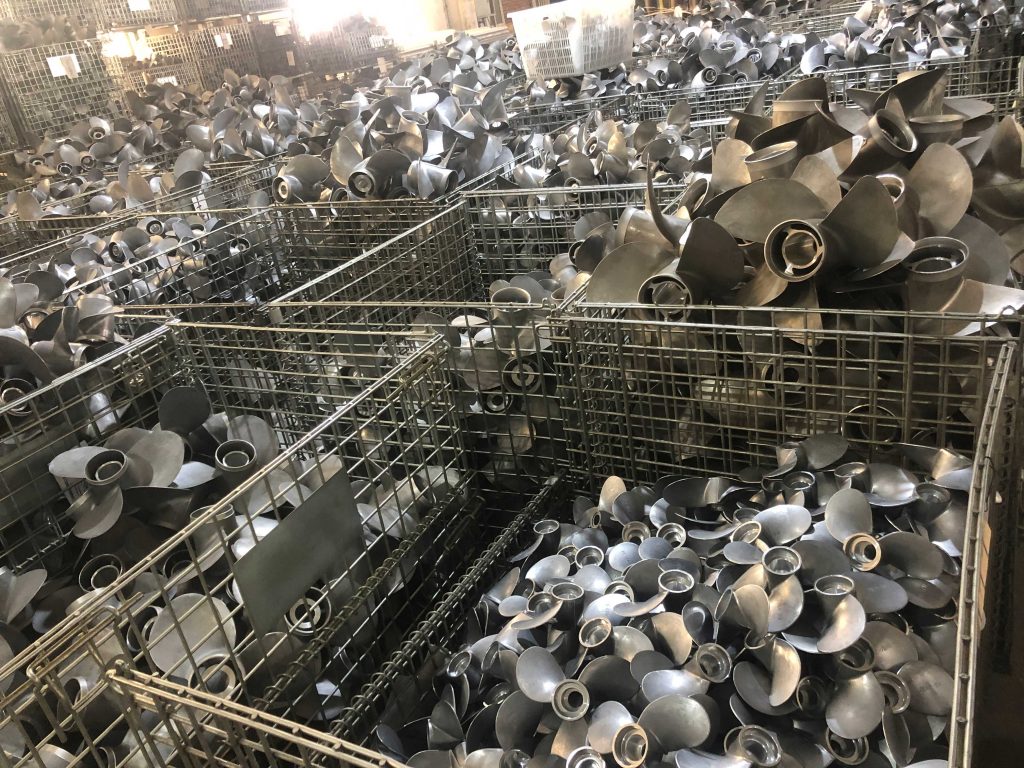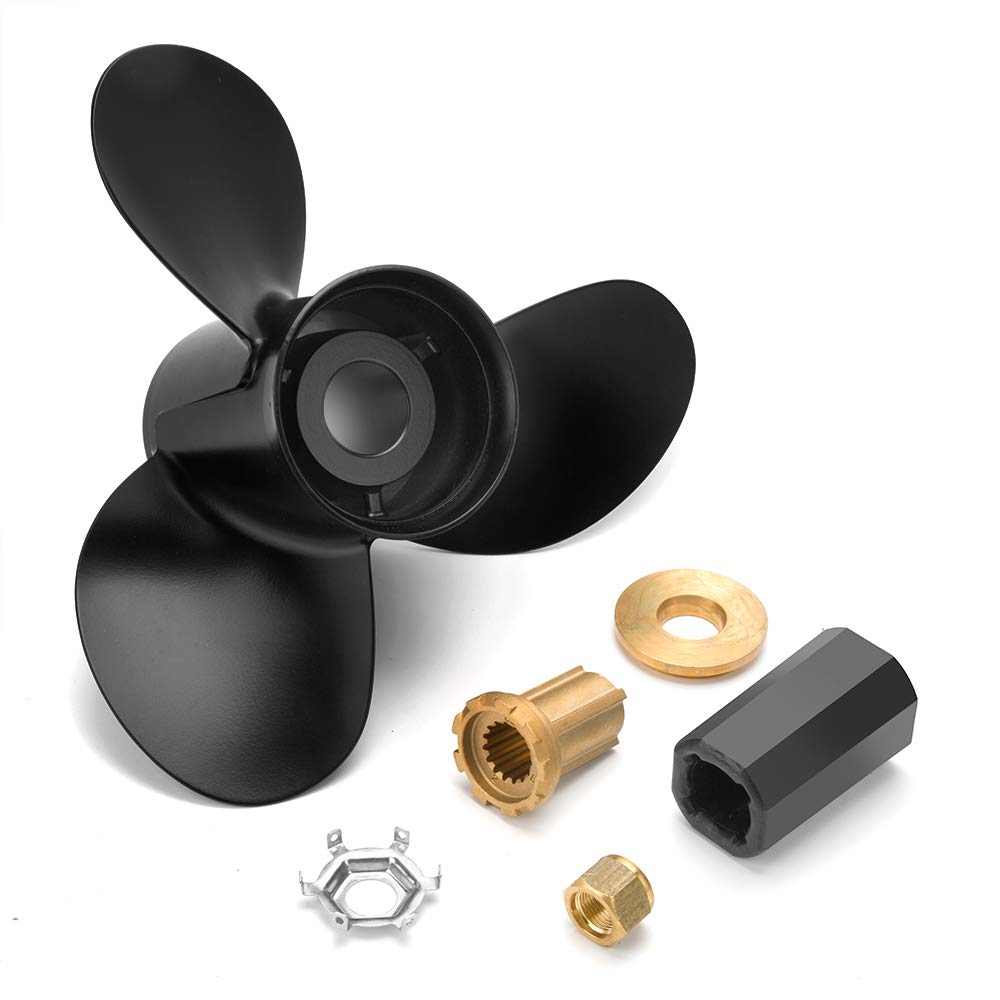Cavitation on a marine propeller causes a decrease in efficiency and thrust, generating excessive noise and vibration. It can lead to erosion and damage on the propeller blades and compromise the propeller’s structural integrity. Additionally, cavitation affects the boat’s maneuverability due to unbalanced thrust distribution, potentially reducing its overall performance and longevity.
What is Propeller Cavitation
Cavitation is bubbles caused by excessive propeller speed or loading. The water vaporizes or boils due to the extreme reduction of pressure on the back of the propeller blade. Many propellers partially cavitate during normal operation, but excessive cavitation can result in physical damage to the boat propeller’s blade surface due to the collapse of microscopic bubbles on the blade.
Cause of Propeller Cavitation
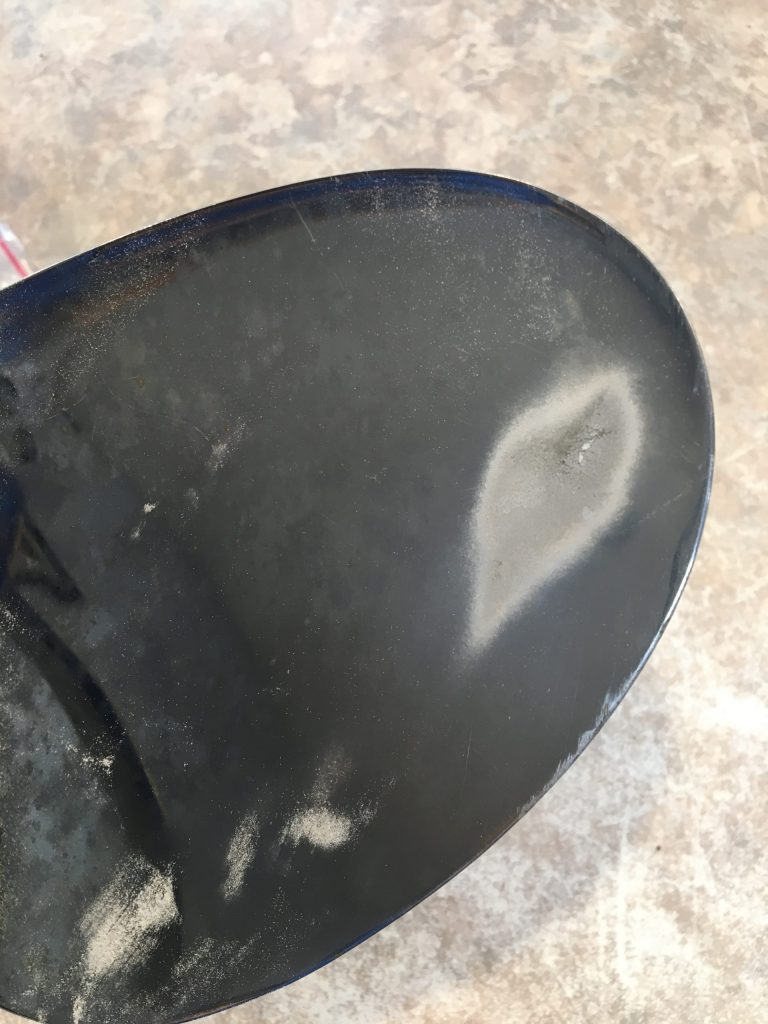
High Speeds: As the rotational speed of the propeller increases, the likelihood of cavitation occurring also rises. At high speeds, the pressure difference between the low-pressure side and the high-pressure side of the propeller blade can be significant, leading to the formation of vapor-filled cavities.
Insufficient Submergence: When the propeller is not fully submerged in water, such as when operating in shallow waters or during vessel acceleration, the water pressure above the propeller blades decreases. This pressure drop can trigger cavitation.
Improper Blade Design: Inadequate propeller blade design, including excessive camber or thickness, can contribute to cavitation. Poorly designed blades may not handle the water flow smoothly, resulting in local areas of low pressure that encourage cavitation.
Rough Water Conditions: Rough seas or turbulent water can create irregular flow patterns around the propeller, increasing the likelihood of cavitation. Sudden changes in water pressure and flow disturbances can promote the formation of vapor-filled cavities.
Damage or Fouling: Damage to the propeller blades, such as dents, nicks, or surface irregularities, can disrupt the smooth flow of water, leading to cavitation. Similarly, the presence of marine growth or fouling on the propeller can disturb the water flow and trigger cavitation.
Types of Cavitation
Sheet Cavitation:
Sheet cavitation occurs when a large, extended sheet or layer of cavities forms along the surface of the propeller blade. This type of cavitation typically occurs at low angles of attack and is characterized by a smooth and continuous sheet-like structure. Sheet cavitation can cause a decrease in propeller efficiency and an increase in noise and vibration.
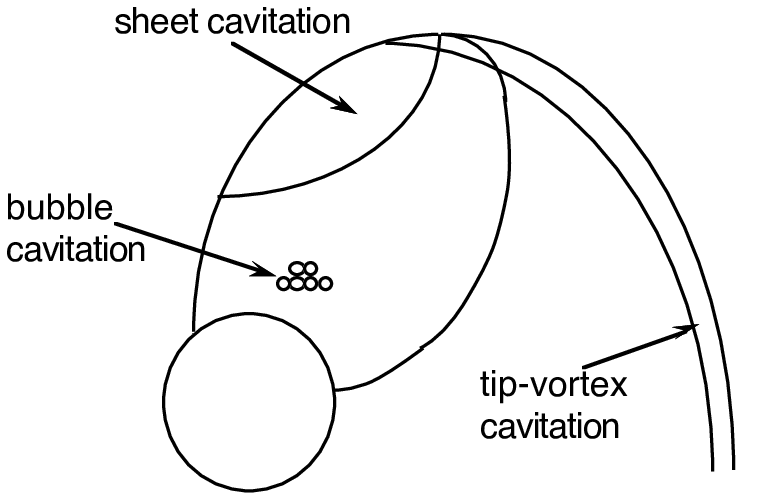
Cloud Cavitation:
Cloud cavitation, also known as supercavitation, is characterized by the formation of a large number of small cavities or bubbles around the propeller blade. These cavities are randomly distributed and constantly forming and collapsing. Cloud cavitation can occur at higher angles of attack and is often associated with high-speed propellers or propellers operating in non-uniform flow conditions. It can lead to reduced thrust, increased noise, and erosion of the propeller blade surface.
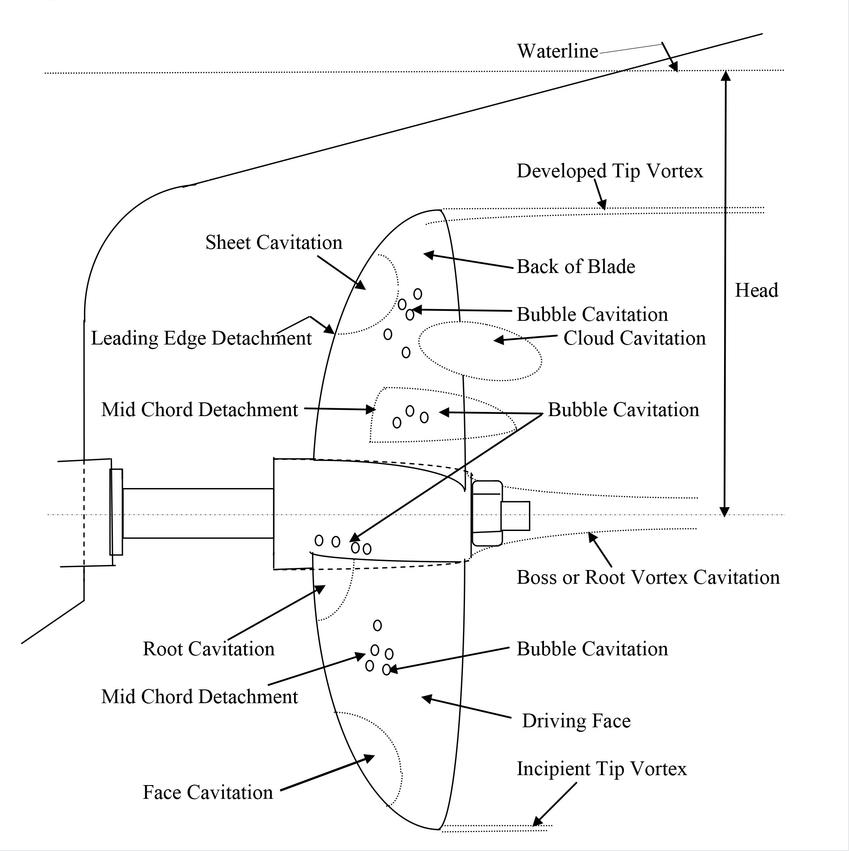
Bubble Cavitation:
Bubble cavitation refers to the formation of isolated, larger cavities or bubbles on the propeller blade. These bubbles typically form at high angles of attack and are more sporadic compared to cloud cavitation. Bubble cavitation can cause severe damage to the propeller blades due to the collapse of the bubbles, resulting in pitting, erosion, and surface fatigue.
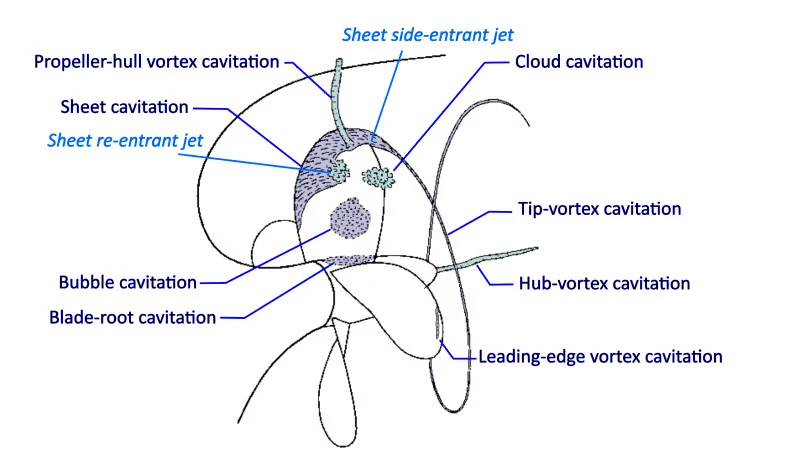
Vortex Cavitation:
Vortex cavitation occurs when vortices are formed around the leading edge of the propeller blade. These vortices can induce pressure fluctuations that cause cavitation to form. Vortex cavitation is commonly observed in highly loaded propellers operating at low flow rates or in propellers with sharp leading edges. It can lead to blade erosion and noise generation.
Means of Avoiding Cavitation
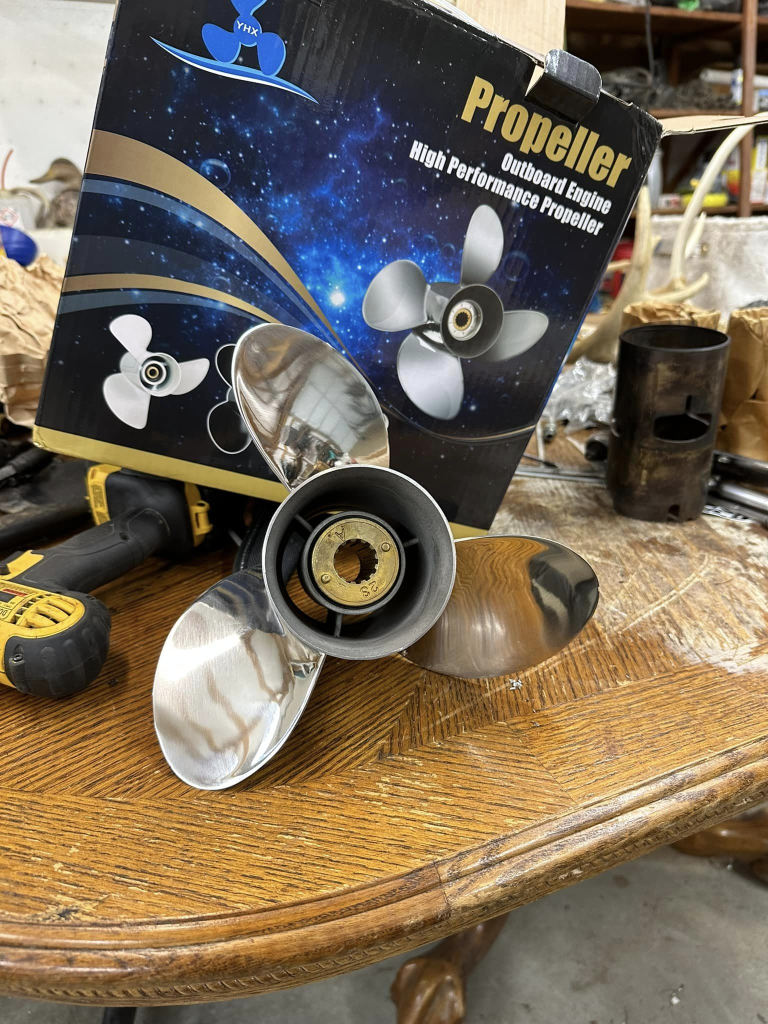
1.reduce the angle of the propeller blade and the angle of descent can be achieved by adjusting the diameter of the propeller
2.To prevent the back side of the propeller blade loading surface is too high, can be used more uniform pressure interface shape
3.To avoid the excessive peak of the propeller front section, the angle of camber and the shape of the air inlet can be adjusted appropriately
4.Adjust the speed of the propeller. Proper adjustment of speed can reduce cavitation but also loss of speed
An outboard propeller is said to be fully cavitating when the whole of the back is covered in sheet cavitation. This phenomenon is also called supercavitation. After the back of the section has become completely denuded of water, the increase in revolutions per minute cannot reduce
pressure there anymore, and so no additional lift can be generated by the back. On the face, however, pressure continues to increase with higher revolutions, and so does the total thrust, although at a slower rate than before cavitation began.
The effect of cavitation on performance
The effect of cavitation on performance can be significant. Cavitation usually starts at the blade tips and gradually spreads throughout the blades as propeller loading increases. If cavitation has expanded to about 0.75 radii, a significant loss of thrust is detected, followed by a decrease in torque, which in practice, means a significant increase in RPM for a given power. Since the thrust rupture occurs faster than the change in torque, this can result in a significant reduction in efficiency.
Conclusion about The Effect Of Cavitation On The Boat Propeller
Cavitation has a significant effect on boat propellers and can impact their performance and longevity. Cavitation occurs when low pressure forms around the propeller blades, leading to the formation of vapor bubbles that subsequently collapse and cause damage. This phenomenon can result in reduced thrust, increased noise, vibrations, and erosion of the propeller surface.
To mitigate the negative effects of cavitation, various design modifications and techniques such as proper blade geometry, material selection, and effective hydrodynamic optimization can be employed. Furthermore, regular maintenance, including inspection and repair of propellers, is crucial to minimize the detrimental impact of cavitation and ensure optimal performance of boat propulsion systems.
FAQs about The Effect Of Cavitation On The Boat Propeller
Q: What causes cavitation in boat propellers?
A: Cavitation in boat propellers is primarily caused by low pressure regions forming around the blades due to high-speed rotation or inefficient design.
Q: Is cavitation reversible, or does it have permanent effects on the propeller?
A: Cavitation can have both reversible and permanent effects. Reversible effects include decreased performance, while permanent effects include erosion and damage to the propeller surface.
Q: Can cavitation cause vibrations in the boat?
A: Yes, cavitation can induce vibrations in the boat, resulting from the collapse of vapor bubbles and the uneven thrust distribution caused by cavitation.
Q: Are there any warning signs that indicate cavitation on a boat propeller?
A: Yes, signs of cavitation include increased noise, reduced speed or thrust, vibrations, and visible erosion or pitting on the propeller blades.
Q: Can propeller cavitation lead to engine damage?
A: While propeller cavitation itself does not directly damage the engine, it can indirectly affect the engine by reducing propeller efficiency and overall performance.
Q: Is it possible to repair a propeller damaged by cavitation?
A: In many cases, cavitation damage on propellers can be repaired through various techniques such as welding, filling, or reconditioning, depending on the severity of the damage.
Q: Can changing the boat’s operating conditions prevent cavitation?
A: Modifying the boat’s operating conditions, such as adjusting the trim, reducing speed, or altering the weight distribution, can sometimes help minimize cavitation effects, but it may not eliminate the problem entirely.

